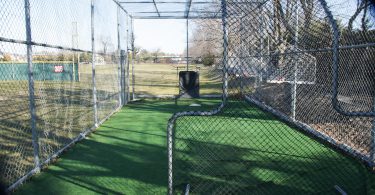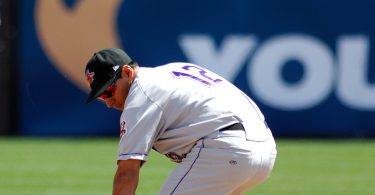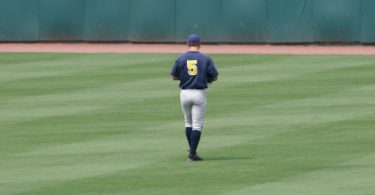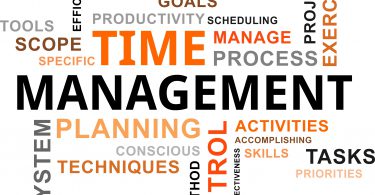More kids than ever are playing college baseball. More kids than ever are on D1 rosters. Despite increased numbers, the path from high school to D1 baseball is more difficult. In this article, we dive into the numbers and explore what the path to D1 looks like for today’s prospects.
Overall College Baseball Participation
Today, there are more kids playing college baseball than ever before. In fact, during the 2023 season, there were almost 8,000 more college baseball participants than during the 2017 season. The chart below shows how overall participation numbers have grown over the last 7 college baseball seasons.
| 2017 | 2018 | 2019 | 2020 | 2021 | 2022 | 2023 | |
| Total # of College Players | 55,761 | 56,915 | 57,591 | 58,997 | 59,974 | 63,070 | 63,606 |
If you pay close attention to college baseball, you know that eligibility waivers due to Covid-19 and the reduced number of MLB draft rounds have contributed to the steep increase in participation numbers since 2020. It also means that college baseball has gotten older at every level, including D1. That’s bad news for high school graduates, especially those who view the recruiting process with a “D1 or bust” mentality.
The “D1 or Bust” Mentality
It should come as no surprise that the vast majority of high school players looking at the next level want to play at the D1 level. D1 baseball gets the most coverage and publicity. These programs have the fanciest bells and whistles. At the upper echelon, D1 can offer an unparalleled development experience.
The desire to play at the D1 level has created a “D1 or bust” mentality embodied by many recruits. These players cast aside other levels of college baseball, only target D1 programs, and would rather not play college baseball at all than pursue non-D1 opportunities.
It would take another article to discuss all the reasons why a D1 or bust mentality is the wrong mindset to bring to the recruiting process. For starters, all levels of college baseball offer incredible opportunities and are highly competitive. Another big issue with this approach to recruitment is that it’s a poorly informed position. Players over-value their ability and/or under-value the difficulty of playing D1 baseball. As you’ll see below, the numbers simply don’t back up this path for many of these players.
High School to D1 Trends
While many have D1 dreams, recruiting trends show that in the eyes of D1 coaches, fewer high school graduates are prepared to make the jump straight to D1 programs. D1 baseball has gotten older and with the MLB draft cut in half, more talented older players are staying for a full 4 years. Many with the D1 or bust mentality are finding themselves with nowhere to play.
In spite of there being over 1,200 more D1 players in 2023 than 2017, there were fewer freshmen D1 players in 2023 (2,683) than 2017 (2,694). The percentage of D1 players who are freshmen has gone from 26.4% in 2017 to 23.4% in 2023, bottoming out at 22.7% for the 2022 college baseball season. You can see the 7-year trend in the chart below.
| 2017 | 2018 | 2019 | 2020 | 2021 | 2022 | 2023 | |
| Total # of D1 Players | 10,202 | 10,192 | 10,367 | 10,409 | 11,858 | 11,522 | 11,488 |
| Total Freshmen | 2,694 | 2,656 | 2,773 | 2,702 | 2,777 | 2,614 | 2,683 |
| % D1 Players who are Freshmen | 26.4 | 26.1 | 26.7 | 26 | 23.4 | 22.7 | 23.4 |
According to the latest national numbers from the National Federation of State High School Associations (“NFHS”), you have a 2.3% chance of going from high school to the D1 level. Depending on where you live, even this number may be misleading. Thanks to NFHS High School Participation Data and the work of College Baseball Insights, whose data was instrumental to this article, we know that the probability of going high school to D1 varies greatly from state-to-state.
Higher Probability D1 States
Some states (California, Florida, and Connecticut, to name a few examples), share a bigger piece of the D1 pie than others. California high school graduates make up roughly 11.5% of all D1 players and have a 2.96% probability of playing D1 ball after high school. Florida high schoolers have 4.28% probability of playing D1 baseball, while making up roughly 6.8% of all D1 players. Connecticut high schoolers also have a 4.28% probability of playing D1 baseball, but make up just under 2% of all D1 participants.
Lower Probability D1 States
Many accept the 2.3% national probability of playing D1 baseball as gospel, but a close look at the numbers show that this is much higher than the state probability for many states. Some states (Iowa, Alabama, and West Virginia, to name a few examples) are well below the national 2.3% probability of playing D1 baseball and have a small percentage of graduates that make up the overall D1 pool. Roughly 0.61%, 1.58%, and 0.87% of Iowa, Alabama, and West Virginia high school baseball players, respectively, move on to the D1 level.
What the Numbers Mean
Are we saying that these numbers give you no shot to play Division 1 baseball and you should give up on your dreams? Or that if you live in a low probability state that you can’t play at the D1 level? Absolutely not! Statistics like this are meant to give the overall perspective and can’t be reduce to the individual level. They do, however, give recruits and families a more realistic perspective on how good their players need to be to play at the D1 level. Not all states are on equal footing and recruited the same.
Using readily available information like this to help you make informed decisions about the recruiting process and ground your college hopes in reality is incredibly important. Pairing participation data with other college baseball insights can help you put together a better recruiting plan. A big part of recruiting success comes from being honest and objective with yourself about your ability, doing research into college programs, and using this information to target the right schools in recruitment.
To this end, we do want you to know that fewer players are going directly from high school into D1 programs, and more players are going from JUCO to D1. You should be aware of the number of players from your state who are playing college baseball, what levels they are playing, and your state probability of playing at each college level. We want you to know that the vast majority of players are going to strike out with a D1 or bust mentality. If you aren’t one of the very best players in your state, know that you don’t need to pour money into D1 exposure events until your skill set becomes more advanced and recruitable by D1 schools. When used the right way, this information will save you time and money, while improving your chances of playing at the next level.
Looking Ahead
We want you to have all the information to make informed and realistic recruiting decisions. We are partnering up College Baseball Insights to bring you the information and insights we discuss above. In the coming weeks, we will release regional and state-by-state college baseball participation data to help you make more informed recruiting decisions. In the meantime, leave the D1 or bust mentality at the door and spend your time relentlessly pursuing a college baseball fit for you!
Disclaimer Note: This article was written with data and insights from 3rd party sources, College Baseball Insights and NFHS High School Participation Data. Data and insights are subject to revision and/or change. We’ve attempted to display as accurate a picture as possible with the information that is available. Readers should be aware that college baseball roster data is fluid and changes throughout the year. Roster data is reconciled by College Baseball Insights throughout the year, but this article may not reflect those changes. Insights cannot account for misreported roster information or other inaccuracies which may slightly alter the numbers and percentages used in this article. Insights are subject to change and are based on best available information.







